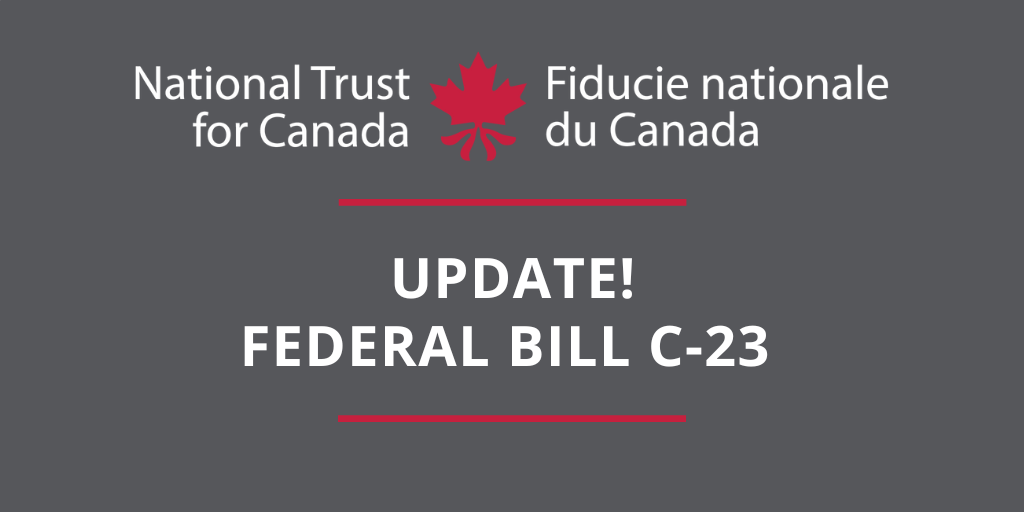C-23 Dies on the Order Paper

With the prorogation of Parliament last week, Bill C-23, An Act respecting places, persons and events of national historic significance or national interest, archaeological resources and cultural and natural heritage, is likely to die on the order paper, along with all the other bills that had been introduced but had not completed their journey through the House and Senate. Despite continued efforts by the National Trust and others in the heritage community to keep pressure on the government to advance the bill, it never moved beyond Second Reading.
The Bill could be reintroduced in the new sitting of Parliament in the spring and, under special circumstances, could be reintroduced at the Second Reading. In either case, it seems unlikely that the bill would have a chance to be meaningfully debated, let alone passed before an election is called.
The failure of C-23 is a sad indictment. Creating federal heritage legislation was explicitly part of the mandate of the Minister of the Environment. The Bill was introduced by the government and, based on their speeches in Parliament, enjoyed support from all parties. It remains unclear how this universal acknowledgement that heritage is important and that the federal government has a strong role to play in its protection got gummed up in the workings of parliamentary democracy and never came out the other end.
Canada needs federal heritage legislation. We are the only G-7 country that has no law at the federal level to protect heritage places owned or recognized by the federal government. There is no legislation to protect archaeology on federal lands. Provincial heritage acts do not apply to federal places.
In addition, Bill C-23 would have addressed one of the Calls to Action of the Truth and Reconciliation Commission by adding Indigenous representation to the Historic Sites and Monuments Board of Canada. It would also have given status through legislation to the Standards and Guidelines for the Conservation of Historic Places in Canada and required that a federal register by established and kept up to date.
The National Trust and others in the heritage community raised concerns about ways that C-23 fell short. These included a desire to extend the application to all places under federal control like crown corporations, better accountability for achieving results, and more attention to the transition points between federal and provincial jurisdiction. There were gaps about what happens to heritage buildings leaving federal hands and how federal actions affect non-federally owned heritage places.
The federal government is Canada’s largest property owner with over 4,000,000 km² of crown land and 37,000 buildings in its portfolio, including almost 1,500 recognized for their heritage value. In addition, it regulates or commemorates over a thousand other heritage places across the country, including heritage railway stations and privately owned National Historic Sites.
In 2003, the Auditor General of Canada exposed that heritage under federal control “will be lost to future generations unless action to protect it is taken soon”. We are still waiting for that action. There is a gaping opportunity for our next government to step into the breech.
